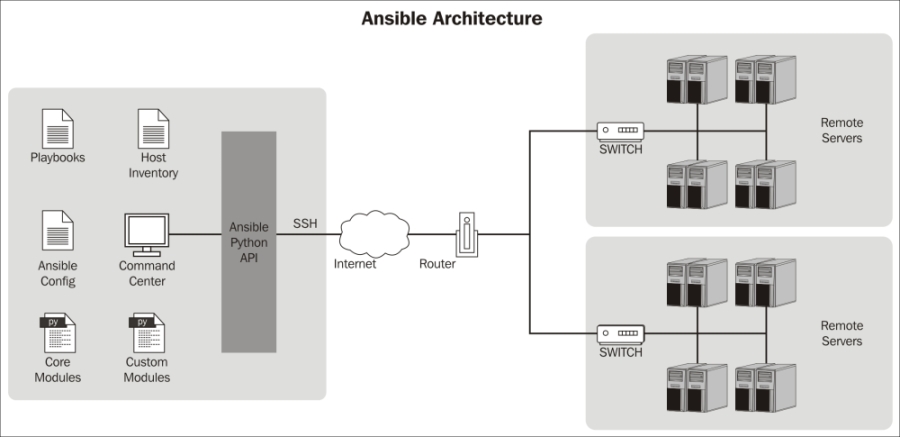Understanding Ansible Plugins and its Architecture
Ansible's implementation is highly modular. A modular architecture provides a high level of encapsulation (keeping concerns segregated and preventing them from cross-contaminating). The plugin solution within Ansible's subsystems is architected in order to keep additions organized and encapsulated. This architecture is divided into distinct subsystems. The most critical subsystems for Ansible plugins and modules and modules are defined as follows:
- The Ansible Core modules
- Ansible configs
- Custom modules
- The Ansible Python API
To better describe the vague list just provided, the following diagram provides an illustrated view of the Ansible architecture:

The preceding diagram highlights three of the most critical subsystems for Ansible plugin and module development. The Core Modules, the Custom Modules, and the Ansible Python API. This stack provides a comprehensive set of components for extending Ansible.
In Ansible, there are two distinct ways to...




































































